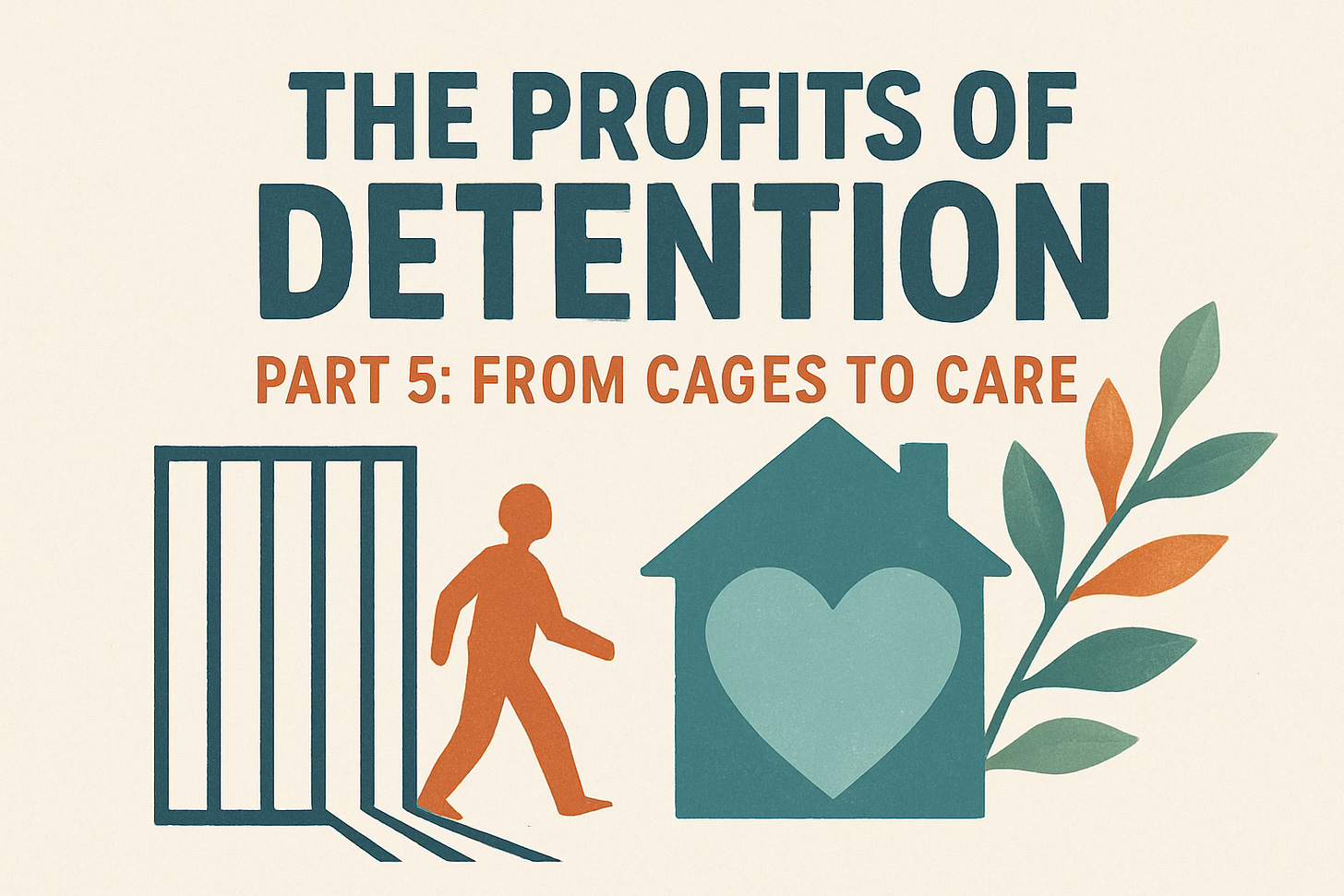Listen to the podcast
"If we can design systems that profit from pain, we can also build systems that restore dignity."
After all we’ve uncovered—the incentives, the contracts, the cruelty, and the emotional collapse—this final chapter asks a simple but radical question:
What if we invested in care instead of cages?
Reimagining Safety for the Undocumented
Detention has long been framed as a necessary evil to maintain law and order. But for undocumented immigrants, many of whom are fleeing violence, poverty, or persecution, it functions less like order and more like punishment. What if safety didn’t come from bars and badges, but from stability, support, and trust?
We already know the alternatives work. Programs that rely on community supervision—like regular check-ins, case management, and legal navigation—cost as little as $4 a day. Compare that to $150 per day for ICE detention, or the astronomical $100,000/day at Guantánamo Bay. These programs respect human dignity while ensuring compliance with immigration proceedings. People show up to their court hearings. They follow the process. Because when undocumented immigrants are treated with dignity, they respond with cooperation.
Restoring Human Flourishing
A care-based system would shift investment toward the six pillars of flourishing defined in the PERMAH model:
Positive Emotion: replace fear with hope
Engagement: give people agency in their own legal process
Relationships: support families instead of splitting them
Meaning: recognize undocumented immigrants as people with purpose, not problems
Achievement: provide access to education and work while awaiting court
Health: ensure access to physical and mental care
Instead of criminalizing presence or poverty, the system could recognize the strengths, contributions, and potential of undocumented individuals. It could empower transformation rather than extract suffering. Instead of detention centers, we could create resource hubs. Instead of forced silence, we could elevate stories of survival and resilience.
A System Worth Admiring
Imagine a system designed not around extraction, but admiration. Where the THX Admiration Equation—Skill, Goodness, Awe, and Gratitude—was not just a theory, but a blueprint for immigration reform.
Skill: Case managers, counselors, and legal advocates helping undocumented immigrants navigate the system.
Goodness: A country that chooses compassion over cruelty.
Awe: Watching families reunited, potential restored, and migration honored as courage.
Gratitude: From those once targeted, and from a public relieved to see policy reflect shared values of fairness and humanity.
This is possible. It is already happening in pockets across the country—pilot programs, nonprofits, and local governments showing the way. We need only scale what already works.
Bonus: THX Facility Audit – A Vision of Care
Imagine entering a facility for undocumented immigrants and evaluating it using the 12 Utilities, PERMAH, and Admiration frameworks:
Security: Are people physically and emotionally safe from harm and intimidation?
Clarity: Do they understand their legal process, rights, and timeline?
Closure: Are they given a path to resolution—not indefinite waiting?
Emotion Evoked: Does the space promote dignity, calm, and hope?
Value: Do they feel seen as human beings with potential?
Every micro-moment—from how someone is greeted to whether they can speak in their language—either builds trust or erodes it. The goal isn’t perfection. It’s design that reflects dignity.
Bonus: 10 Questions to Reframe the Immigration Debate
What would safety look like if it were based on trust, not punishment?
Who benefits from fear-based immigration policy—and who pays?
What emotions should an immigration system evoke?
Are we measuring success by appearances—or actual flourishing?
What kind of country do we want to be admired for?
Would you want your own family treated the way immigrants are?
Are we punishing people for who they are or how the system failed them?
What story do we want history to tell about this era?
Why do we spend more on incarceration than integration?
What happens when we treat presence as courage instead of a crime?
Bonus: A Policy Design Starter Kit
To build systems that promote care and dignity:
Defund: Guaranteed minimum ICE bed quotas and private detention contracts
Reinvest: Community-based programs, legal support, health and trauma care
Measure: Compliance, flourishing, community cohesion—not just removals
Redesign: Immigration facilities as resource centers, not holding tanks
A care-centered approach to undocumented immigration isn’t utopian. It’s evidence-based, cost-effective, and profoundly human. Let this series be more than a witness. Let it be a design challenge.
Because public dignity is not idealism. It is infrastructure. Especially for those whose very presence has been criminalized.
Let’s build it.




